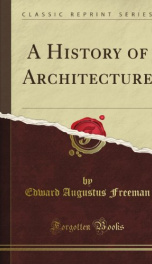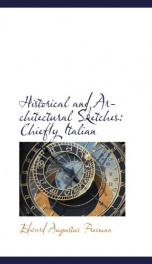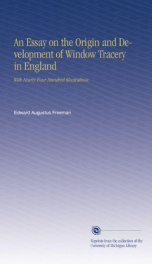a history of architecture

It is a truth which seems at last to be generally admitted, that every effort of human art mast seek for richness and beauty, not in extraneous sources, but in the due adorning of those features which are required by the necessities of construction or utility; it is a principle grounded on the analogy of the natural and moral world, and confirmed by the evidence of the greatest works of every art. But it is architecture that has ever afforded the widest scope for its development, and it ia farther an art whose very existence depends upon this principle; on this ground alone must architecture rest its claim to the place it holds among the noblest arts. Painting and sculpture owe their origin to the higher cravings of man's nature; their bare existence implies some sort of mental refinement, some feeling, however rude and uncultivated, of taste and elegance, in a word, some appreciation of beauty. But these feelings, which to the subordinate arts are the very sources of existence, are tTable of Contents Difference of origin between Architecture and the other fine arts-Prevalent disinclination to allow it its due rank-Different modes of its pursuit -the merely Archaeological-the Ecclesiological-neither directly view it as Art-Difference between Architecture and Building-View of Architecture as Art designed in the present work-antiquarian speculations avoided-reasons for studying the Architecture of all ages and nations 1; CHAPTER II; causes op the diversity of styles in architecture; Different styles peculiar to different ages and nations-effect of circumstances-manners-race-Changes in architecture more easily traced tbau in other arts-influence of physical causes-each style retains traces of its first origin-Character of Transitional periods 11; CHAPTER III; division op styles in architecture; Impossibility of dividing on a single principle-comparative importance of different styles-Constructive division accor
Info about the book
Author:
Series:
Unknown
ISBN:
1440038546
Rating:
5/5 (4)Your rating:
0/5
Languge:
English
Users who have this book
What readers are saying
What do you think? Write your own comment on this book!
write a commentif you like a history of architecture try:
Other books by this author
Do you want to exchange books? It’s EASY!
Get registered and find other users who want to give their favourite books to good hands!
















